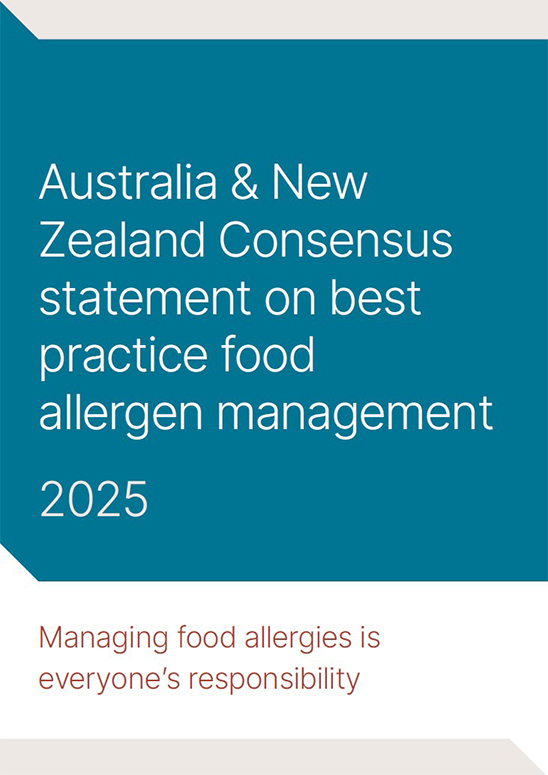Collaborations
Food Allergen Management Consensus Statement
The following consensus statement has been developed in collaboration by all organisations identified on the last page of the statement to advocate for improved food allergen management.

![]() Food Allergen Management Consensus Statement
Food Allergen Management Consensus Statement
For further information about the development of the consensus statement, an article titled An International First: Stakeholder Consensus Statement for Food Allergen Management in Packaged Foods and Food Service for Australia and New Zealand has been published in the Journal of Clinical Immunology and Allergy: In Practice.
Minimum standards for food allergen management training
These minimum standards have been developed to help ensure that all food service staff understand appropriate food allergen management to enable them to provide appropriate meals to customers with food allergy.
![]() NAS Minimum standards for food allergen training
NAS Minimum standards for food allergen training
1. Understand food allergy and the consequences to the customer
1.1 Understand the difference between a food allergy and other special dietary needs such as food intolerances, coeliac disease and cultural/religious requirements (e.g. Kosher) and lifestyle choices (e.g. vegan).
1.2 Be able to list the common food allergens in Australia.
1.3 Know what an allergic reaction might look like.
1.4 Know what to do if a customer has an allergic reaction.
1.5 Know where to seek credible information about food allergies and food allergen management.
2. Understand the law and the consequences to the food service provider
2.1 Understand the law with regards to food allergens and food service provision.
2.2 Identify and use simple, cost effective strategies to minimise the risk of an allergic reaction.
3. Know how to prepare foods for customers with food allergies
3.1 Be able to identify food allergens in products, recipes, packaged foods, ingredients, meal components and garnishes, and when reading food labels.
3.2 Identify and manage areas of potential cross contamination in food service.
3.3 Demonstrate how to prepare food suitable for individuals with food allergies.
4. Be able to communicate with staff and customers about food allergies
4.1 Use questions effectively to find out about a customer’s food allergy.
4.2 Identify the consequences of failing to:
- Openly communicate food allergen information to customers;
- Understand clearly what a customer needs; and
- Clearly communicate that food allergen information to staff.
4.3 Identify and implement strategies in the workplace to ensure that customers receive accurate information about the food allergen content of menu items when they disclose their food allergy.
4.4 Identify and implement strategies in the workplace to ensure that the right meal is served to the customer with food allergy.
4.5 Demonstrate how to implement strategies in the workplace to reduce the risk of a customer having an allergic reaction.
Content updated May 2025.

